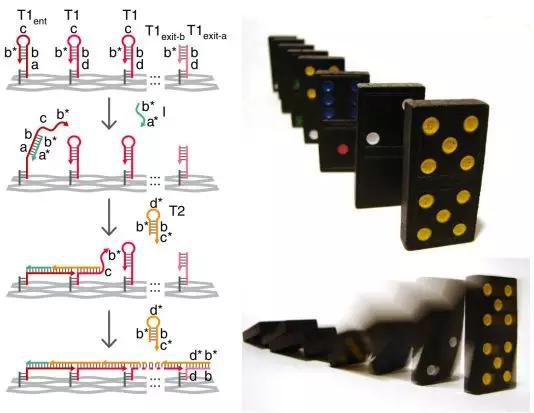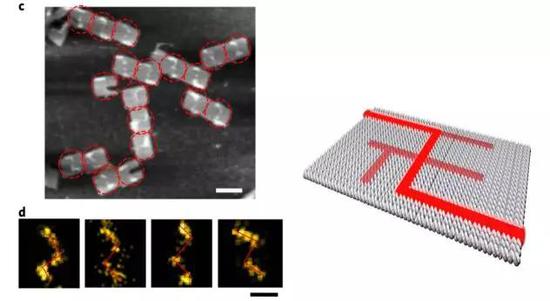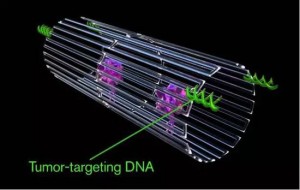Can the robot starve into the blood vessels to starve the tumor?
When it comes to robots, the first impressions that come to mind in your mind may be those that look like humans and have reinforced steel.
However, it is different from everyone's intuitive feeling. In fact, the definition of "robot" is very broad. Any artificial device that can perform tasks on its own to assist human work can be regarded as a robot. So in a broad sense, the assembly machine on the production line, Altman, who cuts the noodles in the canteen, and even the drum washing machine that is common in the family, belong to the category of robots.
There is a special new concept "robot" that has neither a steel body nor electronic components. This kind of "robot" that makes people feel puzzled is the nano robot.
What is a nanorobot?
In general, all things that can accomplish tasks on the nanometer (including a few micrometers) scale can be counted as nano-components, which of course include ribosomes that synthesize protein in cells, lysosomes that dissolve cell waste, in cells. Exosomes that transmit signals, and so on.
But if they are robots, it is still a crucial factor, that is, artificial manufacturing. Similar to these natural nano-originals, nano-robots also perform chemical or biochemical tasks on the nanoscale. These nano-robots are generally not electronic components, but often organic molecules (and possibly inorganic components such as metals). The power that drives them to run is generally not the electrical energy commonly used by macroscopic robots, but the biochemical reactions that are common in natural nano-originals. The main difference between nano-robots and natural nano-originals is that nano-robots are not the tasks that God set up hundreds of millions of years ago, but the brains of their scientists.
Nano "navigator" robot
Recently, scientists from Shanghai Jiaotong University and Shanghai Institute of Applied Physics of the Chinese Academy of Sciences have developed an interesting nano "navigator" robot (published in nature material, material). They used DNA "dna origami" to create a nano-scale square two-dimensional structure, and then left a hairpin-like DNA molecular landmark on the specific route above. Then add a promoter that "activates" these roadsides (only one raft is needed) and a "fuel" molecule that is used to drive the reaction. The single-molecule chain reaction can move forward along the molecular roadmap left by the designer. .

This nano navigator robot works like a common domino.
Looking at it is dizzy, isn't it? Below I use human words to translate. Imagine that two-dimensional DNA origami is like a floor. On the floor, there is a row of dominoes made of DNA molecules. These dominoes are stable without the starter molecules, but when you drop a starter molecule at the end of the domino, these dominoes It will fall down towards the other end, so that the fallen dominoes form a clear path to the other end.
But unlike a domino that can trigger multiple bifurcation paths at the same time, in this nano navigator's domino game, if the DNA signpost left is made into a labyrinth with multiple forks, the single molecule "navigator" It will only randomly extend along one of the paths (and may also go to a dead end). However, such a nano-negative paper is much smaller than the floor used for playing dominoes, which means that many such nano-nano papers can be laid down in a small area. Even in a single unit, the “molecular navigator†has a low probability of finding the correct path. As long as there are enough nano-negative papers, there will always be some good luck. The molecular navigator will find the best path to get out of the maze.

Labyrinth path violently cracked by a large number of navigator nanobots
In short, in this nano-domino system, every piece of DAN nano-negative paper and the molecular navigator above it can be seen as a computing unit. Since a piece of origami is only nanometer-sized, many computing units can be placed in a micrometer-scale area, with considerable computing power. This feature can be used to "violently crack" the nanomaze with the enumeration method, and it is also hoped to be used to fabricate nanoscale molecular sensing structures. In this sense, this system is called a nano "robot", or a molecular computer, it is well deserved.
Nano Robot: Accurately hit solid tumors
"Nano-robots" based on organic molecules are far more than violently cracking nano-maze, a function that doesn't sound close to life. Some time ago, we have reported that researchers at Arizona State University and the China Nanoscience Center have developed a "nano-robot" that is also based on DNA origami technology and can accurately combat solid tumors. The article was published this year. February's nature biotechnology (Nature, Biotechnology). In short, after being injected into the body, this nano-robot can use the tumor-specific ligand (aptamer) carried by the surface to identify the local environment enriched by the tumor, and after finding this special target environment, It spreads into a sheet shape, revealing the drugs inside the body that can kill solid tumors (in their design, thrombin). Its working mechanism is very similar to the precision-guided cruise missiles that are commonly used in modern warfare and can find targets and launch them after reaching the target.


Anti-tumor nano-robot, green DNA ligands on both sides are used to identify tumor cells. The purple object carried in the middle is the thrombin used for anti-solid tumors. The above picture shows the state of cruise.
In addition to the two nanobots described above, there are a variety of nanobots for precise dosing, some of which sound sci-fi, beyond the author's scope of knowledge. .
It is worth noting that almost all nano-robots, including the two technologies detailed in this article, do not require electrical energy to drive, and their working processes are highly dependent on their own special physical properties and highly specific chemical reactions. This has led to their design and manufacturing processes that are not only very complex but also costly.
I believe that how to make these high-end atmospheric nano-robots gradually enter the lives of ordinary people will be the goal of many scientists in the future. Let us wait and see!
Xylitol Gum,Xylitol For Teeth,Xylitol Sweetener,Xylitol Powder,Food Grade Xylitol
Qingdao Bailong Huichuang Bio-tech Co., Ltd. , https://www.qdblcycn.com